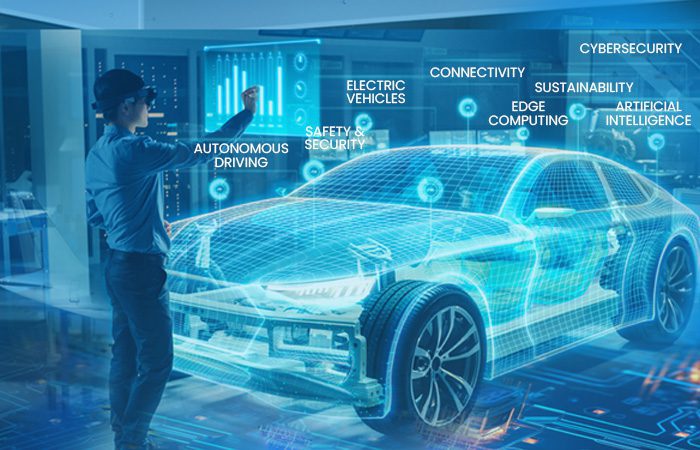
8 Current & Future Trends Disrupting Automotive Embedded Systems
The automotive industry is experiencing a rapid transformation due to technological developments that are changing the way vehicles are designed and manufactured. Modern cars are becoming more sophisticated, interconnected, and intelligent, thanks to embedded systems. That said, automotive embedded systems are expected to grow in complexity as well, due to diverse factors, such as data communications, safety, and vehicle electrification. The proper implementation of such advanced systems calls for domain expertise and innovative engineering design approaches for the best results.
Here are 8 current and future trends that are shaping the development of automotive embedded systems.
Current Trends
- Autonomous Driving
Autonomous vehicles are one of the most significant developments in the automotive industry, and embedded systems play a critical role in enabling this technology. Autonomous cars rely heavily on sensors, radar, cameras, and sophisticated algorithms to make real-time decisions. These systems must work seamlessly together to ensure safe and reliable transportation.
- Electric Vehicles
The rise of electric vehicles is another major trend that is influencing the development of automotive embedded systems. EVs are a type of vehicle that requires a different set of technologies to manage battery life, charging, and overall performance. Embedded systems play a crucial role in managing these aspects of EVs, ensuring that they are efficient, reliable, and safe on the road.
- Connectivity
Connectivity is a central aspect of modern cars, and automotive embedded systems play an integral role in enabling it. Cars can now connect to other devices and systems, both inside and outside the vehicle, making things like navigation and entertainment much more convenient. In-car connectivity also enables carmakers to perform remote diagnostics and manage software updates, improving the overall experience for drivers and passengers.
- Safety & Security
The automotive industry is putting increasing emphasis on vehicle safety features. In this regard, embedded systems play a key role in the implementation of a wide range of safety features, including lane departure warning, automatic emergency braking, and adaptive cruise control, to name a few. The optimum functioning of these features depend on the synergy across actuators, sensors, and embedded software to be able to detect and help thwart potential hazards in real-time.
Future Trends
- Artificial Intelligence
artificial intelligence (AI) is also transforming the development of automotive embedded systems. AI is used to power everything from autonomous driving systems to driver assistance features. AI-powered embedded systems can analyze vast amounts of data from various sensors and inputs to make real-time decisions that improve the performance, safety, and efficiency of vehicles.
- Edge Computing
With rapid advancements in edge computing, engineers are now using embedded systems to enhance analytics at the edge of the network as well as enable more advanced processing. It can help to bring down latency significantly besides allowing more advanced features in real-time. More importantly, it can play a tremendous role in improving overall responsiveness.
- Sustainability
The automotive industry has always been pressed with severe environmental issues revolving around fossil fuel dependence and carbon dioxide emissions. Ensuring sustainability is now a common strategy priority of every player in the sector with 74% of OEMs having an electric plan in place.
Soon enough, automotive embedded systems will be used extensively to optimize diverse sustainability aspects of vehicles, such as emissions, recyclability, and energy efficiency. Thereby, embedded systems will be able to promote a more sustainable future by reducing the environmental impact of vehicles.
- Cybersecurity
As cars become increasingly connected, they also become more vulnerable to cyberattacks. Automotive embedded systems developers must invest heavily in cybersecurity to ensure that connected vehicles are safe from hackers and cybercriminals. This means designing systems that are highly secure and include built-in security features such as firewalls, encryption, and authentication protocols.
Automotive embedded systems are continually evolving, keeping up with the latest trends, and responding to new demands and challenges. As the automotive industry continues to transform, the developers and embedded systems engineers must adapt to ensure that vehicles remain safe, efficient, and enjoyable to drive down the line while fulfilling sustainable development goals at the same time.

